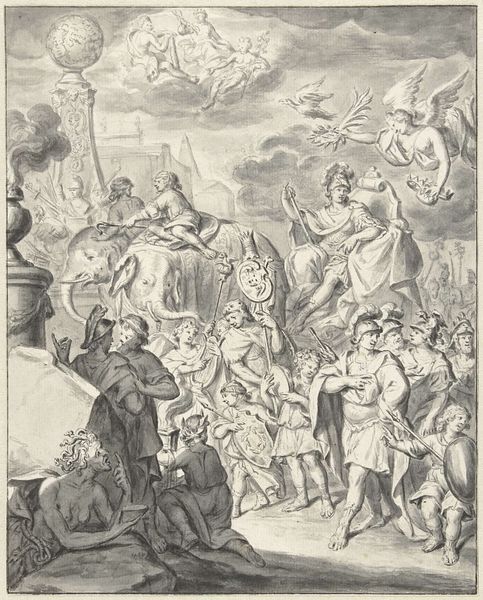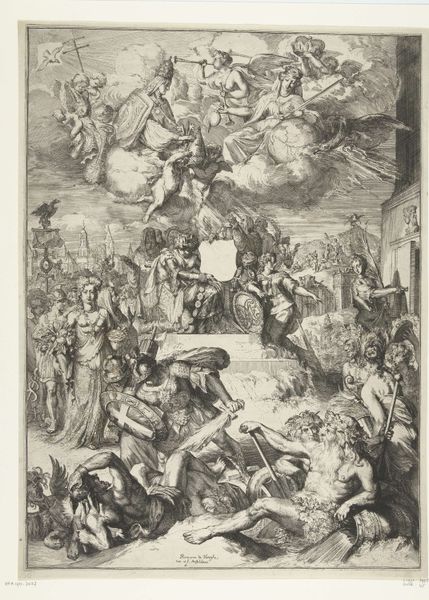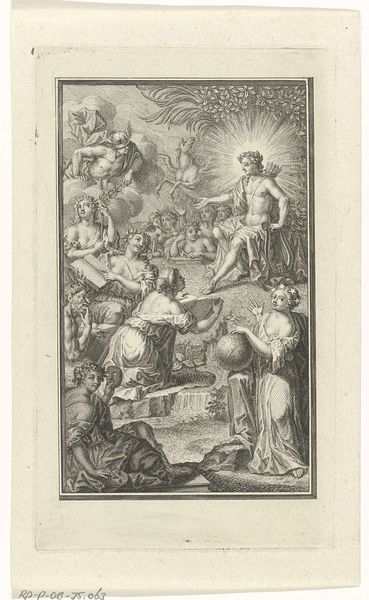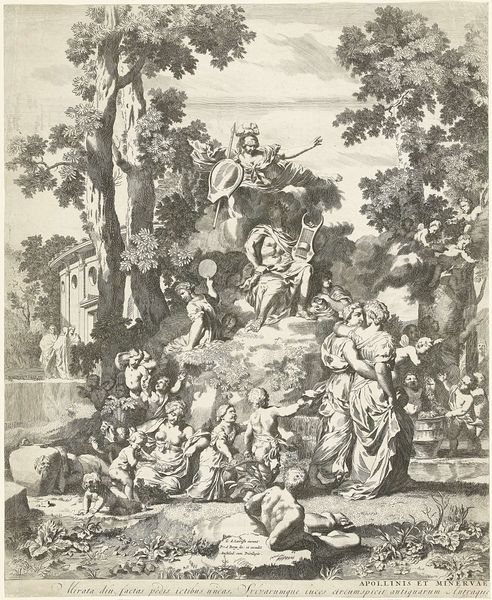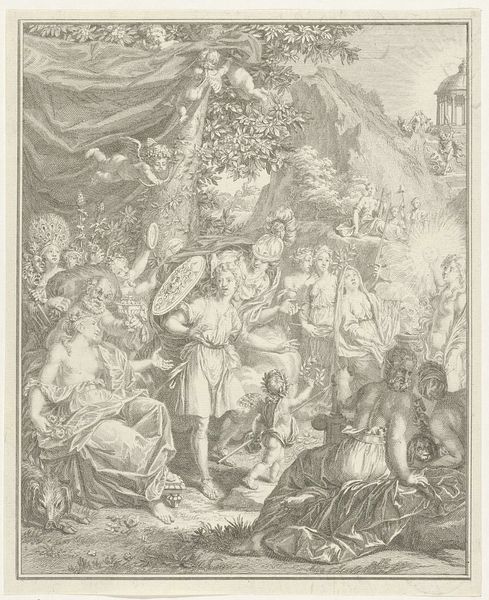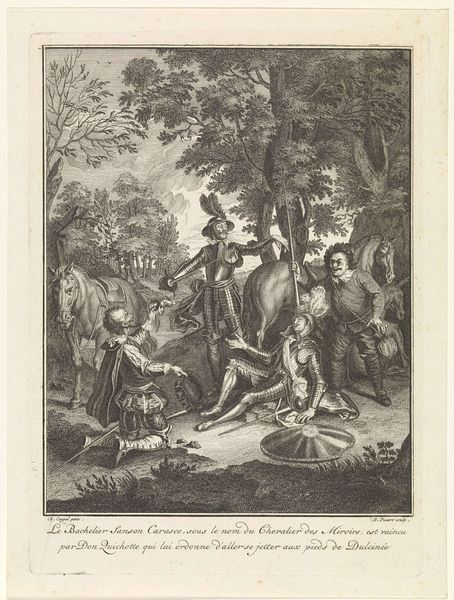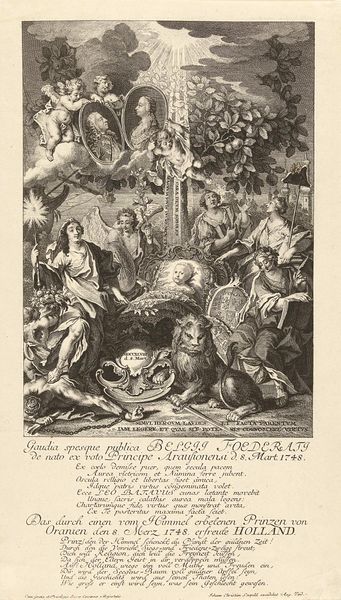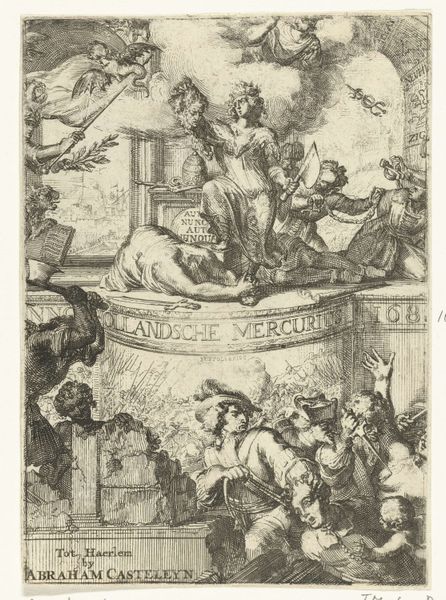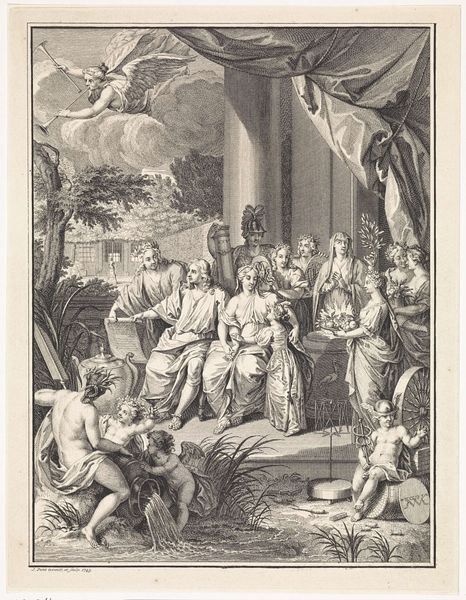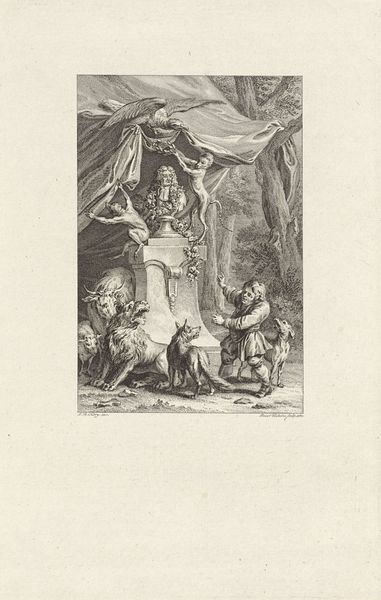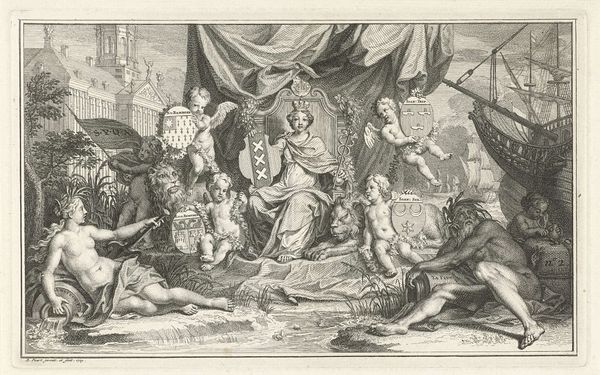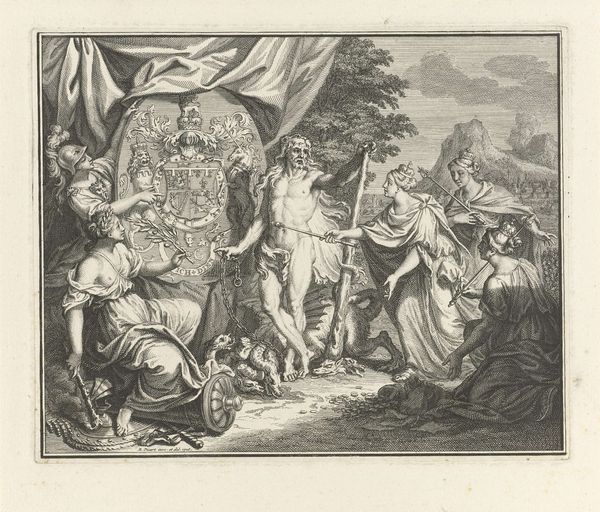
engraving
#
allegory
#
baroque
#
pen drawing
#
pen illustration
#
pen sketch
#
history-painting
#
engraving
Dimensions: height 545 mm, width 462 mm
Copyright: Rijks Museum: Open Domain
Curator: This engraving, completed in 1687 by Jan van Vianen, is entitled "Allegory on the Birth of a Prince of Orange." It's currently held in the Rijksmuseum collection. Editor: At first glance, it presents itself as a rather dense tableau. The composition, while elaborate, appears overcrowded with figures, making it slightly challenging to immediately discern a clear focal point or narrative. Curator: As a print made at the end of the 17th century, such complexity wasn’t uncommon. Let’s consider the production: Vianen was the inventor and the executing hand of this plate. Think about the copper plate, the time spent cutting, and how this facilitated the rapid dissemination of imagery tied to power, specifically images supporting William of Orange. This print becomes a form of political propaganda. Editor: Absolutely, that adds another layer. Beyond its intended purpose, the composition draws the eye across various symbolic groupings—the abundance of allegorical figures, the classical architecture glimpsed in the background, all held together by a complex visual hierarchy. Curator: Precisely. The classical figures, such as the woman with a lyre allude to a lineage. Also observe how the engraver utilized hatching to create tonal variation to distinguish each figure within the print. I wonder who commissioned it, and who consumed it? What did it mean to hold and trade this print at the time? Editor: From a purely aesthetic perspective, there's a definite sense of dynamism. The artist creates texture using simple marks that allow for light to reflect back in an atmospheric sense. Consider the light radiating around some of the figures, highlighting important visual details while enhancing the theatrical nature of the composition. Curator: Thinking about how engravings operated in the art market, the production runs and distribution networks would provide crucial context. Vianen not only needed technical skills, but had to find consumers as well. Editor: It makes me see beyond the surface. It transforms the way one interacts with and perceives this sort of printed work. Curator: Indeed, analyzing art from a materials-based perspective opens so many new avenues to further understanding.
Comments
No comments
Be the first to comment and join the conversation on the ultimate creative platform.
